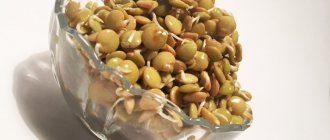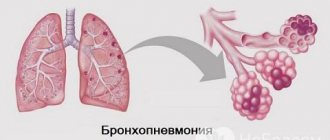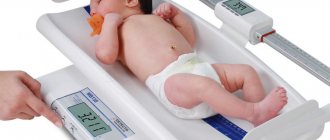Rickets is a disease that is one of the childhood pathologies that occurs in children at an early age. The main reason that provokes this disease is a disruption in the formation of bones in children. This occurs due to a lack of vitamin D in the baby’s body during active development. It is especially important during the formation of the cartilage and bone skeleton.
A lack of vitamin D negatively affects the physical development and intelligence of a child. Parents need to constantly pay attention to the behavior of their child. Even if they see minor changes in the baby’s habits, they should consult a doctor, since this disease can develop in a latent form.
Does a person need vitamin D?
Vitamin D ensures the development and maintenance of healthy bone tissue in childhood and throughout life. It regulates and maintains the necessary balance of calcium and phosphorus. In children, the result of vitamin D deficiency is rickets, and in older children, adolescents and adults - softening of the bones (osteomalacia). A large number of scientific studies conducted in recent years indicate the role of vitamin D deficiency in the occurrence of diabetes, autoimmune, infectious, cardiovascular and cancer diseases.
It turns out that vitamin D, which is traditionally classified as fat-soluble, is not such at all. Once in the body or independently formed in it, it acquires an active hormonal form and acts like a real hormone. Therefore, it would be more correct to call it not a vitamin, but a D-hormone. However, maintaining historical tradition, it continues to be called vitamin D.
Symptoms and signs of rickets
The most common, completely curable, is vitamin D deficiency (classical) rickets.
The terminology for relatively uncommon clinical signs of rickets is as follows:
- craniotabes - significant softening and flattening of the occipital bone of the skull to the point that when pressure is applied, the bone seems to “fall” deeper;
- “Olympic” forehead – protrusion of the frontal bone forward;
- caput quadratum - protrusion of the parietal bones to the sides;
- buttock-shaped skull - simultaneously with the protrusion of the parietal bones, there is a depression deep into the seam between them;
- saddle-shaped deformation of the head - depression of the skull at the site of the large fontanel;
- “tower” skull – stretching the head upward;
- funnel chest - depression of the sternum deeper, usually in its lower part;
- “chicken” breast – protrusion of the sternum forward in the form of a keel;
- rachitic “rosary” - palpable tubercles on the 5-8 ribs at the site of attachment of their bone tissue to the cartilaginous tissue;
- Harrison's groove - a transverse depression of the chest along the line of attachment of the diaphragm to the sternum (while the costal arches are turned forward);
- rachitic “bracelets” - visually and palpably determined thickenings at the site of the epiphyses of the radial bones;
- “strands of pearls” - similarly defined thickenings in the diaphysis of the phalanges of the fingers.
Ways of getting vitamin D into the body
Vitamin D enters the body in 2 ways:
- Exogenous - with food or vitamin preparations.
- Endogenous is its independent synthesis in human skin.
This vitamin exists in nature in two forms: D2 (ergocalciferol) and D3 (cholecalciferol), the chemical structure of which has slight differences, and their behavior in the body is almost the same. Most products contain only trace amounts of it. Few of them contain enough vitamin D3, including fish oil, which is hated by children, fish, mainly fatty varieties (mackerel, sardine, tuna), yolk, and beef liver. Some vitamin D2 is present in mushrooms, yeast and some plants.
They also produce products deliberately fortified with vitamin D, which can be purchased in almost any store. These are infant formula, milk and many dairy products (yogurt, cheese, butter), bread, cereal and, surprisingly, even beer.
The uniqueness of vitamin D lies in its ability to be synthesized (formed) in human skin under the influence of normal sunlight.
Methods for preventing rickets
Prevention of rickets in children begins during pregnancy and continues after the birth of the baby, so it is usually divided into: antenatal and postnatal.
Each of them is also divided into: specific and nonspecific.
Antenatal prevention of rickets is the one that is carried out for pregnant women, and postnatal prevention is carried out directly to the child, after his birth.
The fetus has a very high calcium requirement. After 27 weeks of pregnancy, the fetus absorbs about 290 mg of calcium daily. He receives it from his mother through the placenta. At the same time, the phosphorus-calcium metabolism of a pregnant woman adapts to the needs of the baby, the calcium content in her blood decreases by approximately 8%. The expectant mother’s body mobilizes all its reserves to meet the baby’s growing needs every day, so she needs additional calcium and vitamin D.
In antenatal prevention, great importance is attached to nonspecific methods that should be used in all pregnant women.
Nonspecific prevention of rickets includes:
- Creating conditions for the pregnant woman that allow her to maintain the daily routine she needs.
- Sufficient and regular exposure to the air at a time when it is still light.
- Sufficient motor activity for this position.
- A balanced diet containing calcium and phosphorus in an optimal ratio, rich in vitamins, microelements and the main building component - protein.
- Treatment, or better yet, prevention of gestosis, miscarriage and other diseases.
The best calcium intake is provided by the consumption of milk and a variety of dairy products or calcium supplements by women who are milk intolerant.
Specific antenatal prophylaxis is carried out in the final two months of pregnancy if they fall in autumn and winter. It includes the administration of vitamin D to all pregnant women from the 28th week of pregnancy daily for 6 - 8 weeks. The exception is pregnant women over 30 years of age. The use of vitamin D is not recommended for them, because there is a danger of the formation of calcifications in the placenta, which lead to fetal hypoxia.
Pregnant women should take vitamin D, like any medicine, strictly as prescribed by the doctor.
Nonspecific postnatal prevention consists of:
- proper and complete care for the child, compliance with the recommended regimen, sufficient walks with the baby during the day, summer air baths taken in the shade of trees;
- massage and gymnastics for 30 - 40 minutes a day, each procedure daily.
The only additional source of vitamin D for breastfed babies is breast milk.
But the amount of cholecalciferol contained in it ranges from 15 to 100 IU. This value does not cover the need for it in an intensively growing child’s body. In addition, the proportion of vitamin D in mother's milk depends on how much the woman was provided with it during pregnancy. Therefore, breastfeeding, despite all its benefits, can be a risk factor for the development of rickets, especially in winter, when there is not enough sunlight.
Specific postnatal prevention of rickets is carried out for all healthy children, starting from the first month of life. Children are prescribed vitamin D in the required dosage. Prevention can begin at 2–3 weeks of age if there are additional risk factors.
Risk factors for the development of rickets include:
- From the child's side:
- prematurity;
- intrauterine growth retardation;
- low body weight;
- malabsorption syndrome (malabsorption in the intestine);
- convulsive syndrome and the use of anticonvulsants;
- diseases of the liver and biliary tract;
- disturbance of calcium and phosphorus metabolism in close relatives;
- twins.
- From the mother's side:
- age over 30 at the time of conception;
- a history of kidney and gastrointestinal diseases;
- the interval between pregnancies is less than 3 years.
Causes of the disease
According to the etiology, rickets can be:
Exogenous origin
Happens when:
- insufficient intake of calcium from food. More often this happens with early artificial feeding with non-adapted formulas, when giving porridge for the 1st complementary feeding (especially semolina, which is recommended only at the end of the 1st year of life). A higher need for calcium in premature infants who have an incomplete supply, as well as due to their rapid growth in the 1st-3rd month of life;
- insufficient intake of vitamin D from food, especially in premature infants, who “require” more of it;
- inactivity;
- inadequate exposure to sunlight and fresh air, unsatisfactory conditions for keeping and caring for the child;
- deficiency of some microelements (magnesium, zinc), protein, water-soluble vitamins.
Endogenous origin
Observed when:
- reduction in the processes of digestion and absorption of calcium and phosphorus in the intestines;
- decreased absorption of vitamin D in the intestine in pathological conditions (“Secondary rickets”);
- significant excretion of calcium and phosphorus in the urine;
- violation of the utilization of calcium and phosphorus by bone tissue;
- disruption of the mechanism of formation of active forms of vitamin D3 in the liver or kidneys in their pathological condition, as well as genetic origin (“Vitamin D-dependent rickets”);
- decreased activity of vitamin D receptors.
Based on the etiology of rickets and vitamin D metabolism, the initial stage of vitamin D deficiency rickets is:
- insufficient amount of vitamin D in food;
- incomplete formation of vitamin D in the skin (especially in the autumn-winter period);
- intake of large amounts of phytates found in grain products (they contain phosphorus). They increase the loss of vitamin D in feces and reduce the absorption of Ca2+ in the intestine. Wherein:
- the synthesis of calcium binding protein decreases, which leads to the removal of calcium from the bones;
- Gapophosphatemia, hypoproteinemia occurs, and the amount of citrates decreases, which leads to a decrease in the alkaline reserve of the blood and the development of acidosis. The resulting hypophosphatemia disrupts the formation and deposition of calcium hydrogen phosphate in bone tissue. What is clinically manifested from the nervous system: increased excitation, and then inhibition, from the muscles - a decrease in their tone.
As a result of these pathogenetic changes, various disorders develop, many of which, without treatment, can remain for life:
- disorders of the central nervous system;
- hypotension of muscle tissue, convulsions (spasmophilia);
- first functional, and then morphological disorders of the pulmonary system;
- gastrointestinal disorders; later – hepatolienal syndrome, pathology of the biliary tract;
- decreased immunological status (rickets aggravates diseases of the respiratory and digestive systems);
- functional changes in the cardiovascular system (CVS) (systolic murmur at the apex of the heart);
- changes in the bone marrow and, as a result, in the blood - frequent anemia;
Osteogenesis disorders are manifested by the following changes:
- removal of calcium from bones (resulting in osteoporosis);
- softening and deformation of bones – rachitic osteomalacia;
- expansion of the epiphyses of tubular bones - hyperplasia of osteoid tissue, which is clarified by x-ray data;
- slower growth of bone tissue in length (hypoplasia) and development of cartilage;
- uneven compaction of growth zones (pathognomonic sign of the period of convalescence);
- deformation of posture;
- dental caries.
Should I give vitamin D to my child or not?
Many parents doubt whether they should give their child vitamin D. He already gets it through food and during regular walks. To avoid any doubts, mothers and fathers need to know whether natural sources (food and sunlight) are capable of fully providing for the growing body.
Under the influence of sun rays, vitamin D3 is quite actively synthesized in the skin up to 15 IU/cm3/h. This amount is quite capable of covering the need of the child’s body for the vitamin. But it is worth remembering that the process of its formation is influenced by: the geographical location of the country, time of year and day, level of air pollution and gases, cloudiness. In Russia, given its geographical location, the amount of vitamin D a person needs is formed in the skin only in the summer, on warm, sunny days. Moreover, a child dressed only in a diaper should be exposed to the open sun for at least 30 minutes a week, and a baby with open arms and face - 2 hours. A conscientious mother will not leave her child in the open sun, especially since pediatricians do not recommend walking in direct sunlight for children under six months. Melanin is a pigment that gives color to the skin, acts as a barrier and prevents the passage of sunlight, so dark-skinned people produce less vitamin D.
Scientists have proven that sunscreens and lotions (SPF 8 and higher), acting as a barrier, reduce vitamin D production by 95%.
A very small proportion of vitamin D comes from food, amounting to only 20 - 30% of the required norm, and even a complete diet is not able to meet the need for it.
The artificial baby eats approximately 1 liter of the mixture every day. The mixture is fortified with vitamins, so he receives 400 IU of vitamin D daily. There is little of it in breast milk, so infants suffer from deficiency. Older children receive about 150 - 250 IU of vitamin D from food daily, and the need for it in an intensively growing body is much greater, especially in adolescents.
It turns out that natural sources cannot provide the child with the necessary amount of vitamin. Therefore, the prevention of rickets in children by prescribing vitamin D supplements is mandatory in Russia.
Parents who care about their child’s health should follow the pediatrician’s recommendations and give their baby the prescribed dosage of vitamin D.
Forecast
If natural sources of vitamin D are not able to provide the child’s body in the required amount, then there is nothing wrong with the child receiving it from other sources. The need and dosage of vitamin preparations is determined by the pediatrician.
It is extremely rare, but there have been cases of vitamin overdose, manifested by nausea, vomiting, thirst and impaired renal function. In this case, you should see a doctor or perinatal nurse.
What vitamins are needed to prevent rickets, says Dr. Komarovsky:
What vitamin D preparations are used to prevent rickets?
In our country, the following drugs are used to prevent rickets:
- “D3vit baby”, or the well-known fish oil. It is produced in capsules that can be used from birth. Each capsule contains 200 IU of vitamin.
- “Vigantol” is an oil solution (20,000 IU per 1 ml).
- "Aquadetrim" is an aqueous solution containing 15,000 IU in 1 ml.
- “Vitamin D3 BON” is an oil solution of two types: for oral administration and intramuscular injection (200,000 IU per 1 ml).
Although the bioavailability of oil and aqueous solutions is almost the same, pediatricians prefer to prescribe Aquadetrim for prevention, because the aqueous solution has a number of advantages.
Advantages of Aquadetrim:
- It is absorbed 5 times faster, and its concentration in the liver is higher than that of an oil solution. This allows it to be used to prevent rickets in children suffering from gastrointestinal diseases, in whom the process of absorption of oil solutions is difficult.
- To assimilate it, less bile is needed and enzyme systems are not strained. This effect is extremely important for premature infants, given the functional immaturity of their organs and systems.
- The effect of "Aquadetrim" lasts up to 3 months (from oil solutions 4 - 6 weeks).
- It is more active, and the clinical effect occurs a week after its administration.
- Convenient and safe to use.
- Does not require special storage conditions.
- It has a pleasant taste, which children really like, and children do not like fish oil, which contains oil solutions, and are reluctant to accept it.
"Aquadetrim" is produced in glass bottles equipped with a pipette. Each bottle contains 10 ml of solution, and one drop contains 500 IU.
According to the latest recommendations, all babies up to one year old, including premature ones, regardless of the type of feeding, for the purpose of prevention, vitamin D is prescribed 2 drops (1000 IU) per day every day, starting from 1 month of life. It should be given to the child constantly without interruption during the summer months, preferably up to 3 years of age.
Treatment of rickets in children
The “ideology” of treating rickets is to eliminate all the causes that caused it. Treatment should be comprehensive and long-term. At the same time, at present, greater importance is attached to nonspecific (i.e., aimed at general strengthening of the body) treatment.
Nonspecific treatment of rickets in children:
- rational (natural) feeding;
- organizing a daily routine appropriate to the child’s age;
- ensuring the child spends a long time in the fresh air with sufficient insolation (1);
- therapeutic exercises and massage;
- hardening;
- treatment of concomitant diseases.
Is it possible to overdose on vitamin D?
When a person stays in the sun for a long time, the excess vitamin formed in the skin is destroyed, so in this case an overdose is impossible.
Poisoning from vitamin D preparations is extremely rare. The safety of its single dose of 300,000 IU has been scientifically proven. For example, if a child drinks 2 bottles at a time, nothing bad will happen. An overdose can occur in children suffering from a congenital disorder of vitamin D metabolism. Its main symptoms are nausea, vomiting, increased fluid intake (thirst), and impaired renal function.
Despite rare cases of overdose, vitamin D preparations, like other medications, should be kept in a place where the child cannot reach them.











